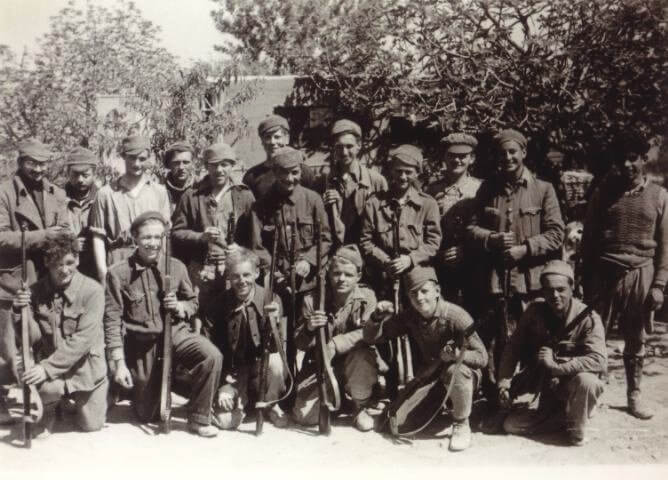


Richmond Barracks is delighted to welcome historian Donal Fallon to write a series of blog posts about the building and its rich history. Today, Donal is taking a look at the links between the Spanish Civil War and Dublin.
The Spanish Civil War, while playing out on foreign battlefields, had many interesting international dimensions. In some ways, the war was a precursor for the World War which followed, the Luftwaffe’s brutal bombing of Guernica would, in time, be replicated on the streets of British cities. The war pitched the government of the Spanish Republic against a military coup led by General Francisco Franco, who enjoyed the military support of both Hitler and Mussolini.
In an Irish context, the war is notable for the involvement of hundreds of Irish volunteer fighters on both sides of the conflict. While it is something of an old cliche that the victors of wars write their history, the Spanish Civil War is perhaps the exception to the rule. Overwhelmingly, it is those who opposed fascism in Spain who are commemorated today.
On Emmet Road – and featured on our Inchicore and Kilmainham walking tour – a plaque honours six local Inchicore men who participated in the Spanish Civil War as members of the International Brigades. The plaque was unveiled in 2013, and includes the three-pointed red star, the symbol of the International Brigades.
The International Brigades were created by the Communist International as a means of getting young and willing Volunteers to Spain to fight in the conflict. Something in the region of 40,000 to 60,000 men enlisted within them. A young Brendan Behan was refused on the basis he was too young. In many countries the rank and file who volunteered came from their local Communist Parties, in Ireland this was true too, but there were also men from the ranks of the IRA. The IRA actually forbade members from enlisting – insisting its battles were at home – but that didn’t stop some young members from choosing a foreign battlefield.
Some of these men are relatively familiar names today, included by Christy Moore in his tribute song ‘Vive La Quince Brigada’. Tony Fox, for example, came from Goldenbridge Avenue. A member of the Dublin Brigade of the IRA, he enlisted for Spain and was killed in action at Lopera on the Córdoba Front in December 1936.
Some listed on the plaque came from families which were steeped in this community – for example Bill Scott. Scott returned from Spain, one of the lucky ones, and died in 1980. His father William had fought in the Easter Rising as a member of the Irish Citizen Army at the College of Surgeons. The men of the Scott family were bricklayers through generations, and very prominent in Dublin trade unionism.
To some in Ireland, the war in Spain was viewed as a struggle between Christ and Anti-Christ. Some who enlisted on the opposing side to the men commemorated on Emmet Road believed that they were fighting in defence of Catholicism, and against the influence of Moscow. It should be noted that many of those men who went to Spain to oppose Fascism also considered themselves proud Catholics – Frank Ryan, leader of these men, retorted to criticism by stating “as a Catholic, I will take my religion from Rome, but as an Irish Republican, I will take my politics neither from Maynooth nor Moscow.”
In the time since the unveiling of this plaque, other men with connections to Inchicore have come to light, including Michael Nolan, born in 1910. He gave the address of his mother when he enlisted to fight in Spain – 14 Emerald Terrace, Inchicore. He arrived in Spain on December 12th 1936, and was dead by the end of the month.
This story is one of many local tales told on our new local history tour of Kilmainham and Inchicore.
Donal Fallon is a historian, broadcaster and curator from Dublin. Formerly Historian in Residence to Dublin City Council, he is the author of numerous studies of twentieth century Dublin, including The Pillar: The Life and Afterlife of the Nelson Pillar (New Island, 2013). He produces the Three Castles Burning podcast and has contributed to publications including Jacobin, Dublin Historical Review, Saothar and The Irish Times. He is a graduate of Maynooth University, University College Dublin and the Ulster University, and lectures with the Lifelong Learning department of University College Dublin.
Posted 05 May 2020
Tagged with: News